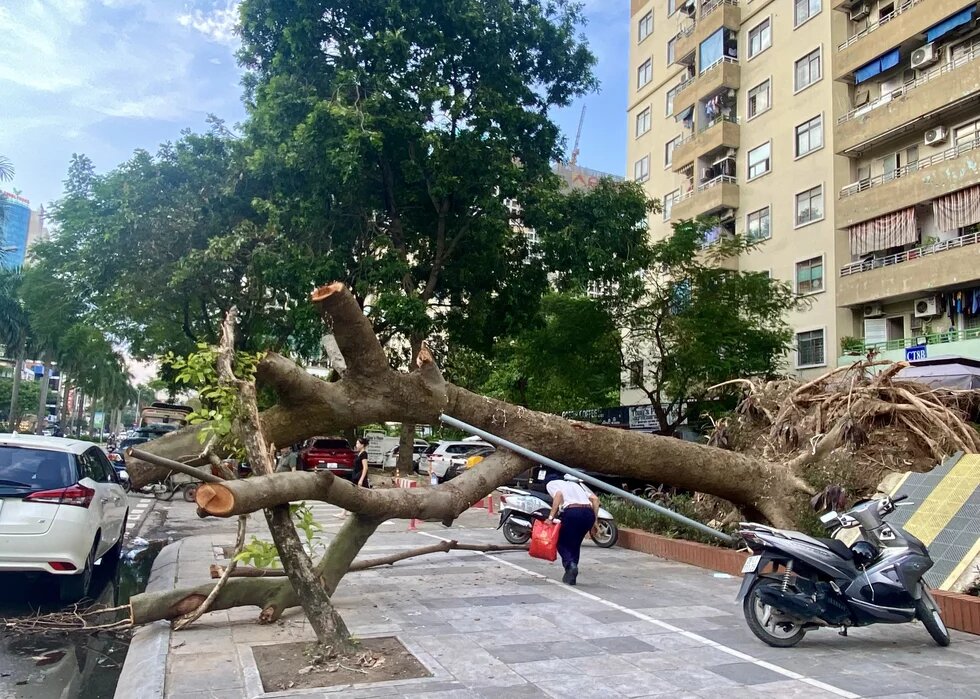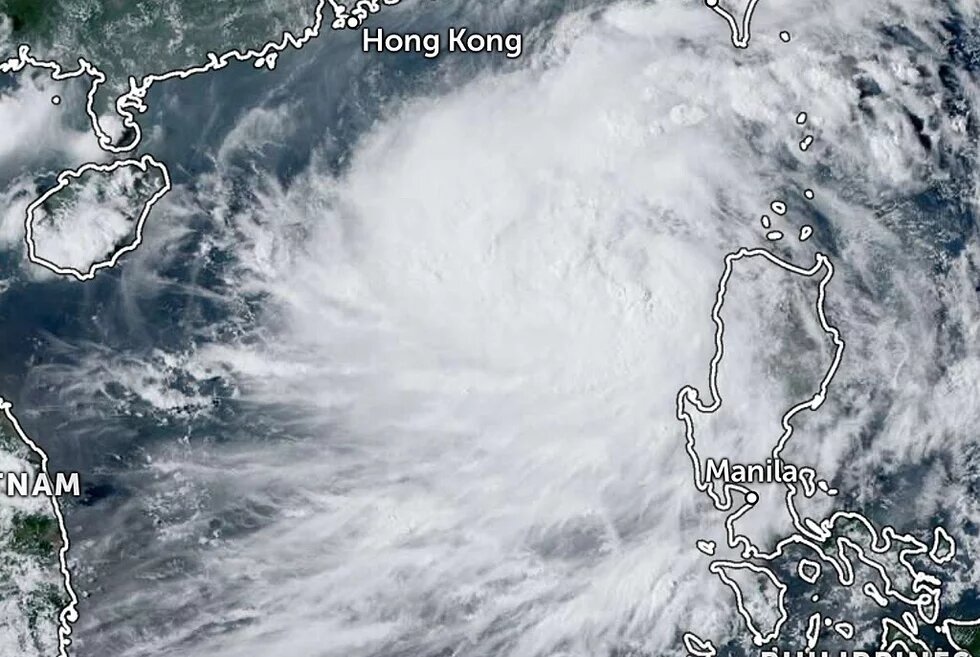
Despite warnings that Typhoon Yagi would be a superstorm, its aftermath left devastation beyond what Vietnam could have imagined, offering a costly lesson in responding to natural disasters.

Hanoi, Vietnam – According to the initial report by the Committee for Disaster Prevention and Control, as of September 17, 2024, residual rains from Typhoon Yagi, which triggered floods and severe landslides across Vietnam’s northern mountainous provinces, have left 329 people dead or missing, with more than 1,900 injured.
Early estimates put the total damage to property at more than VND50 trillion (about USD2 billion). In addition, Vietnam's annual GDP growth rate could decline by approximately 0.15 percentage point, according to the government’s latest resolution on disaster recovery solutions.
Typhoon Yagi left behind a costly lesson in how to handle future natural disasters, especially as the effects of climate change become increasingly severe.
The Ruins after the Superstorm
Standing beside her peach tree orchard, into which she had invested significant time and money since the beginning of the year, Nguyễn Thị Quý from Nhật Tân Ward, Tây Hồ District, Hanoi, could only remain silent as she looked at the barren branches. Never before had she witnessed her entire livelihood disappear so swiftly.
Severe flooding in the days following Typhoon Yagi’s strike on Hanoi has destroyed over 700 of the 1,000 peach trees.
"The garden is mostly submerged, and the trees are dead. Now, all I can do is prepare new soil for the next year,” Quý said. "If conditions had been favourable, this garden would have brought in about VND300 million (about USD12 thousand). Now, I don't even know if the remaining portion will yield VND 100 million (about USD4 thousand).”
Quý is just one of many households in Tây Hồ District facing economic losses from the storm-induced flooding.
Most peach trees were planted in gardens located along the riverbanks, which were severely flooded, causing significant damage to the growers. Local officials from Tây Hồ District People's Committee estimated the district's agricultural losses to exceed more than VND132 billion (nearly USD5.3 million).
In Quảng Ninh, the first mainland province where Typhoon Yagi Storm No. 3 in Vietnam – made landfall, the reported damage by September 15 reached nearly VND23.8 trillion (approximately USD966 million), almost half the province's total budget revenue from the previous year.
However, the storm's most severe damage was not confined to property. The true catastrophe unfolded when Yagi's residual rains caused widespread flooding and landslides across northern mountainous provinces.
On September 10, Làng Nủ, a mountainous village, which was home to 33 households with 168 people was wiped out by flash floods in just a few minutes. The official toll lists over 100 people dead or missing. What was once a peaceful destination now exists only in memories, and for the survivors, it has become a haunting nightmare.
One of the survivors, Hoàng Thị Lành, a 25-year old from Làng, is still shaken. “After a loud explosion, everyone screamed, ‘Run!’ My husband and I grabbed our two children and raced up the hill. Within two minutes, we looked back, and the house had been swallowed by the soil and rock."
That same day, in Nậm Lúc Commune, Bắc Hà District, Lào Cai Province, 18 people were reported dead or missing due to severe landslides in Nậm Tông Village.
Lý A Hải, head of Nậm Tông Village, recalled that before the incident, some villagers near the area heard a sound like an airplane flying over the mountain. No one could have imagined the disaster that would follow.
The Unusual Characteristics of Typhoon Yagi
Mai Văn Khiêm, Director of Vietnam’s National Centre for Hydro - Meteorological Forecasting, highlighted several unusual characteristics of Typhoon No. 3 at a post-typhoon recovery conference chaired by Prime Minister Pham Minh Chinh on September 15, 2024.
He noted that Typhoon No. 3 was the strongest storm in the South China Sea or the East Sea in the past 30 years. It intensified rapidly and maintained superstorm status for an unusually long period, with its weakening pattern defying normal expectations.
Most notably, the post-storm tropical depression occurred primarily on the eastern side of the Hoàng Liên Sơn mountain range, even though it was not directly in the storm’s path or affected by its winds.
This is highly unusual, as previous storms following a similar trajectory typically brought heavy rains to the western side of the range, Khiêm explained.
Widespread heavy rainfall across many provinces for days after the storm had dissipated caused river and stream levels to rise rapidly. The water level of the Thao River in Lào Cai and Yên Bái provinces even surpassed its peak of the last 53 years, according to the report from the Ministry of Natural Resources and Environment on September 14.
The ministry's assessment also found that, over the past three months, the northern mountainous region experienced 40-60 per cent more rainfall than the annual average, leaving the soil in most areas saturated.
This, combined with prolonged heavy rains of high intensity, led to widespread landslides across many regions.
Expounding on the storm’s residual effects, meteorological expert Lê Thị Xuân Lan explained that these remnants are extremely dangerous, as they often bring prolonged heavy rains after a storm has passed.
Smaller storms typically have remnants with a diameter of around 300km, while larger storms can reach 500km or more. Yagi’s residual effects extended over 1,000km in diameter, meaning its influence reached more than 500km from the storm’s center.
Even though provinces like Lào Cai, Yên Bái, and Cao Bằng were not in Yagi's direct path, they were severely impacted by its residual effects, Lan noted.
By September 17, ten days after Typhoon Yagi made landfall in Quảng Ninh, many northern mountainous provinces were still under warnings for flash floods, landslides, and land subsidence, including Điện Biên, Sơn La, Hòa Bình, Lào Cai, and Yên Bái.
Lessons from Irrecoverable Losses
The severe aftermath of Typhoon Yagi has raised questions about the storm's unusual characteristics and the strategies needed to minimize damage from similar storms in the future.
One of the factors that exacerbated Yagi's destructive power was human-induced climate change, according to a new rapid analysis by the ClimaMeter consortium, a research project funded by the European Union and the French National Centre for Scientific Research (CNRS).
Comparing how similar weather events were in the past to how they are now, scientists found that depressions near Vietnam similar to Typhoon Yagi produce 25 per cent increase more rainfall than in previous decades.
Winds are also stronger, with speeds of up to 5 per cent more intense.
“While some of these changes can be caused by natural variability, human-driven climate change has also contributed to the event,” the analysis confirmed.
In late July 2024, a joint study by researchers from Rowan University and Pennsylvania State University (US) along with Nanyang Technological University (Singapore), revealed that tropical storms in Southeast Asia are now forming closer to shore, intensifying more rapidly, and lasting longer over land.
These changes, driven by climate change, are increasing the risk for tens of millions of people in coastal regions, with cities like Hải Phòng, Yangon, and Bangkok facing unprecedented threats from stronger, longer-lasting storms.
Many experts in Vietnam also recommend prioritizing the creation of detailed maps outlining landslide and flash flood risks. Once completed, these maps should be handed over to local authorities to integrate into economic and social development plans.
Local governments could then zone off areas with low geological risk for infrastructure development and prepare safe relocation plans for high-risk areas.
Minister of Agriculture and Rural Development Lê Minh Hoan suggested that advanced technology should be continuously applied and improved to support disaster forecasting, risk management, and earlier, more proactive response scenarios, combined with indigenous knowledge.
According to Hoan, no solution can perfectly prevent disaster damage. However, humanity can reduce the impact to the lowest possible level through a proactive approach to early action and by enhancing disaster resilience and preparedness among both disaster response teams and communities.
While humanity cannot resist nature, it can learn to adapt, mitigate damage, and protect what matters most — human lives.
__
Le Dinh Tuyen is a journalist at Thanh Nien Newspaper covering environment issues in Vietnam and Mekong region. His main focuses include water resources, fisheries, riparian communities' livelihoods, salt water intrusion, climate change, pollution, education, health etc. along the Mekong River, especially in the Mekong Delta.
Kieu Mai is Hanoi-based journalist covering sustainable development and energy. Her articles spotlight clean energy, energy transition, carbon credit, agriculture and forestry.
Disclaimer: This published work was prepared with the support of the Heinrich Böll Stiftung. The views and analysis contained in the work are those of the author and do not necessarily represent the views of the foundation. The author is responsible for any liability claims against copyright breaches of graphics, photograph, images, audio, and text used.






